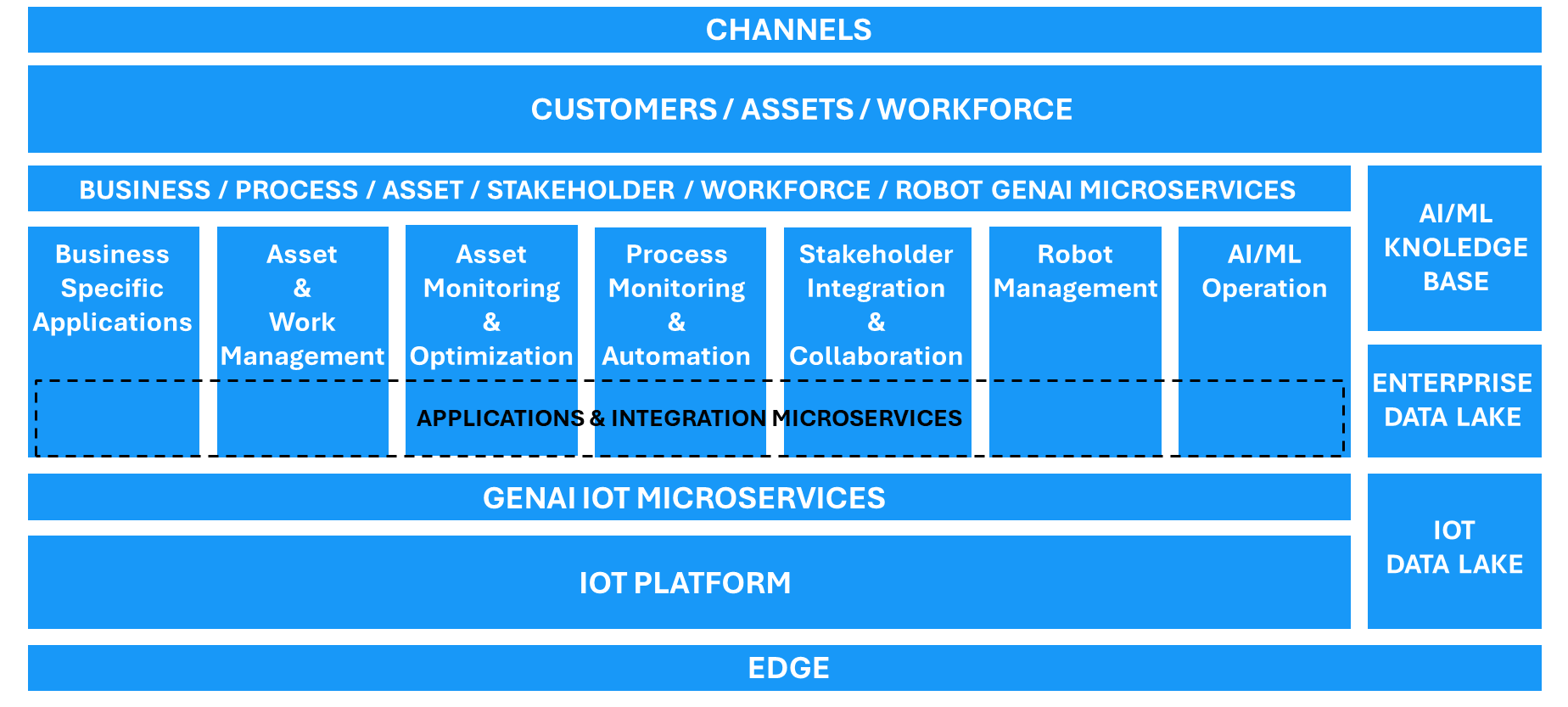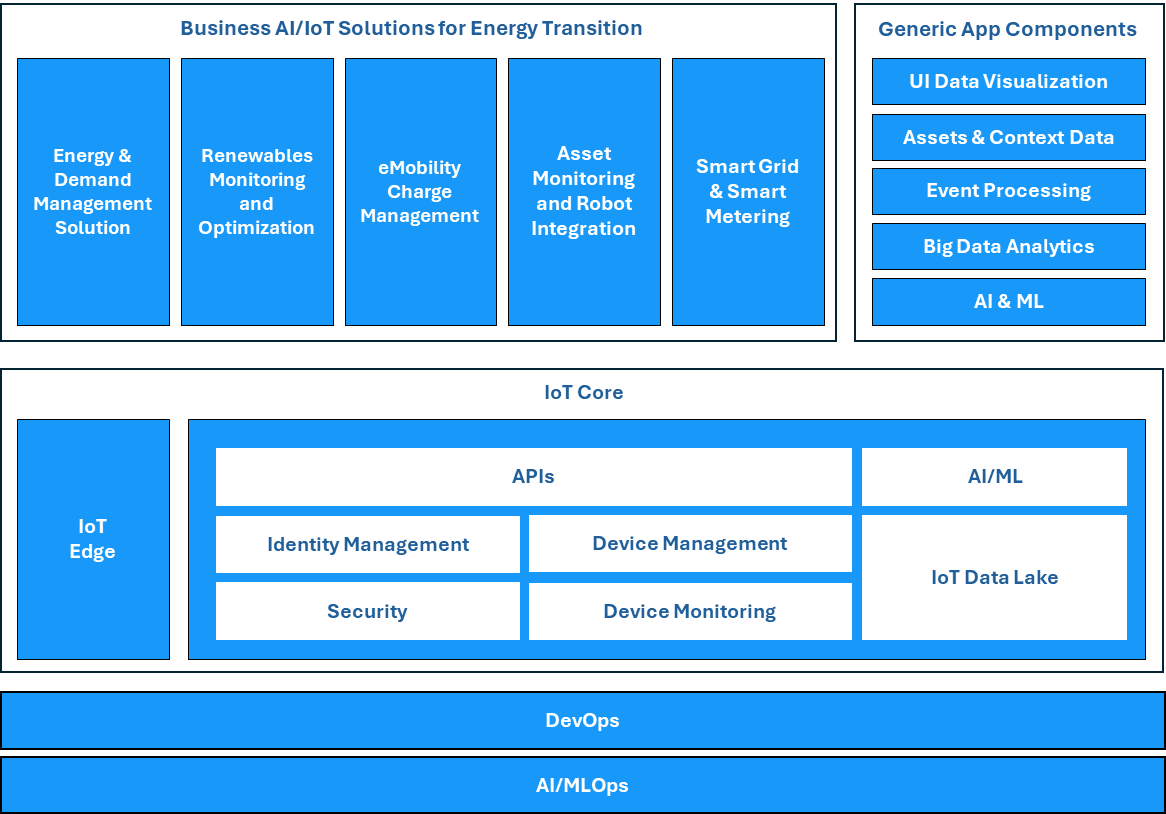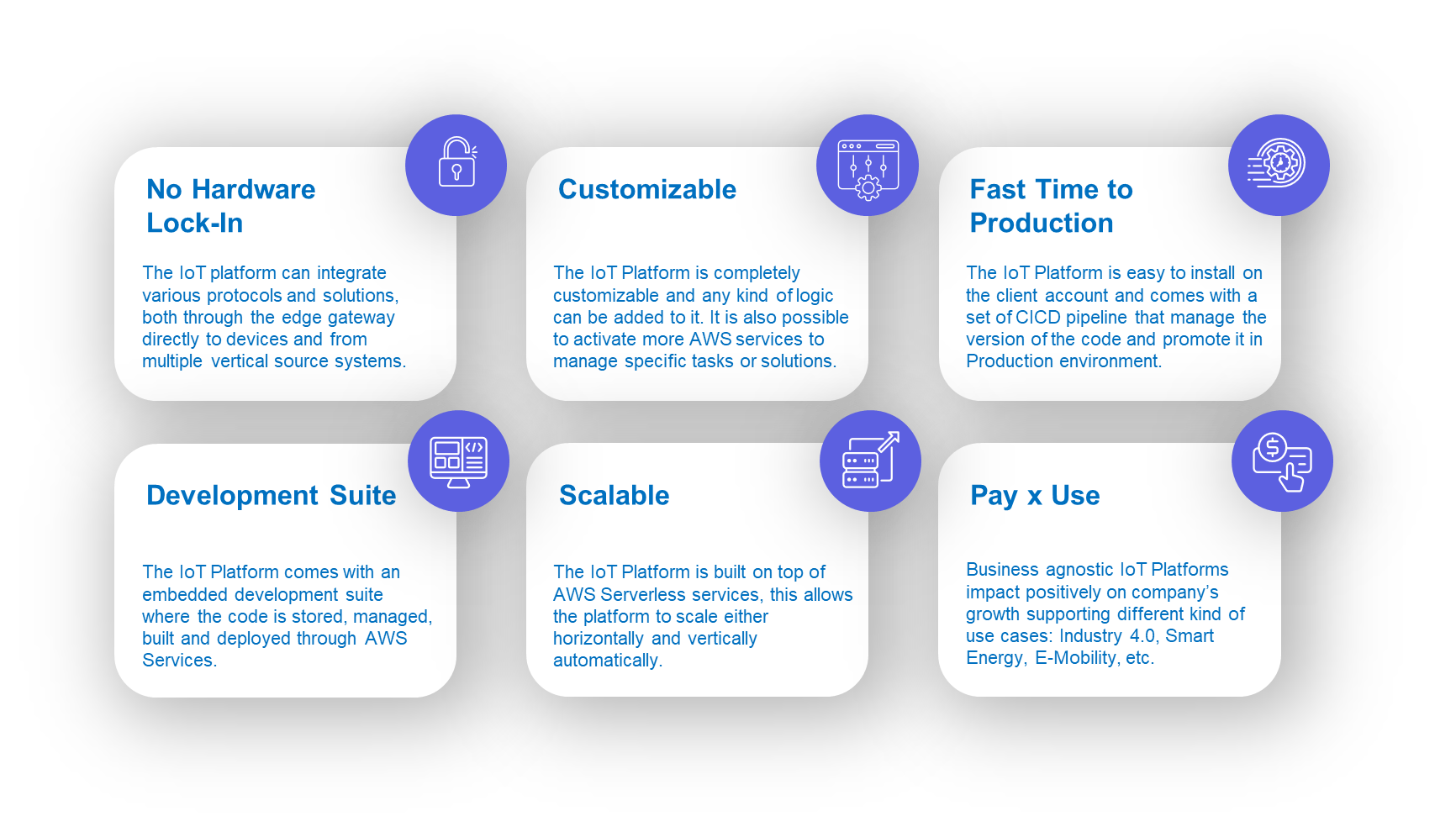,allowExpansion)
Reply IoT Platform Accelerator
An all-in-one, multi-purpose IoT platform that is open, flexible, scalable, customizable, and applicable across various contexts and sectors
New Operational Models
The Energy & Utilities sector, as well as other energy-intensive industrial sectors such as Manufacturing, Automotive, Transportation, and Infrastructure, is adapting its operational and business models to accelerate the decarbonization process.
Enterprise information system architectures are evolving, introducing components to create new mission-critical applications that enable new operational models and services.
Evolving Enterprise Architectures
New opportunities have already pushed almost all operators in the energy sector to innovate their architectures and start projects to introduce these new components alongside their core information systems. Some utilities have chosen to create flexible and open architectures that allow for dynamic evolution without limitations imposed by the rigidity of their components.
In the same direction, some operators in the Oil & Gas and Automotive sectors are focusing their strategies on renewable generation and the electrification of consumption and mobility. The control of consumption, the exploitation of distributed energy resources, and the opportunities to participate in flexibility events are progressively pushing even large operators in the manufacturing sector towards adopting similar architectures.

The Challenge
The profound changes and transformations in the energy world represent a push for companies in the Energy & Utilities sector to review their current internal operational processes and services for their customers. More importantly, it is a concrete opportunity for many operators to rethink their market positioning and seize the opportunities and challenges that the energy transition offers and requires.
It is therefore essential to evolve current systems to ensure real-time interaction with industrial plants, energy resources, and energy distribution networks. Equally crucial is the introduction of new application components to control energy flows, the dynamic operation of their plants, and the execution of optimization strategies, as well as the monitoring of assets.
The Solution
To support companies in evolving their Enterprise Architectures, Sense Reply, in collaboration with the AWS Global IoT Team, has designed, developed, and implemented a technologically innovative portfolio of solutions based on AWS serverless components to facilitate the adoption of end-to-end IoT with a "ready-to-use" platform and a set of AI-powered business applications.
RIPA – Reply IoT Platform Accelerator
RIPA – Reply IoT Platform Accelerator currently supports many clients in launching new IoT & AI powered business solutions, facilitating their energy transition.
The architecture of RIPA consists of micro-services that make it open, flexible, and scalable: it can indeed be evolved by our clients without any limitations.

Benefits
RIPA allows to take advantage of multiple benefits as it is a synthesis between a "SW package implementation" approach (which brings speed and low initial investment costs) and a "custom development" approach (which allows maximum customization and flexibility and avoids any lock-in).
